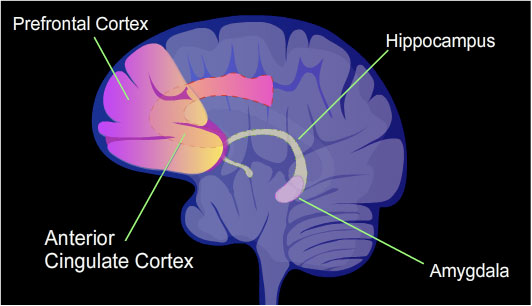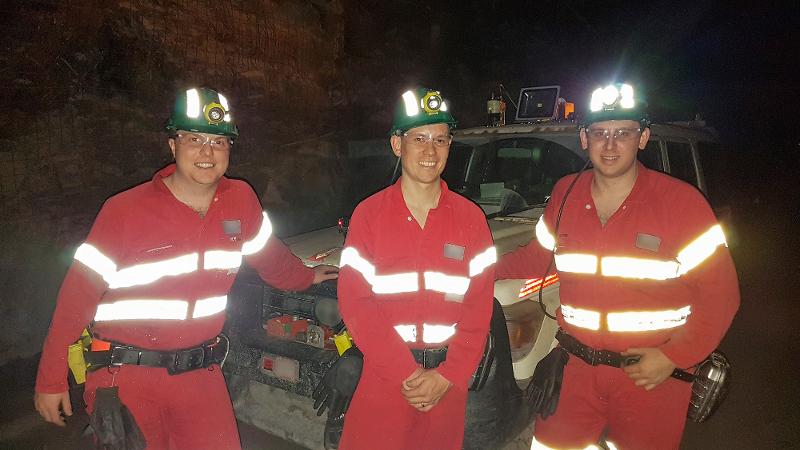
Brief News of Cognitive Navigation (2017-003)
1. How the brain keeps time
by Anne Trafton December 4, 2017

- McGovern neuroscientists discover networks of neurons that stretch or compress their activity to control timing.
- Timing is critical for playing a musical instrument, swinging a baseball bat, and many other activities.
- Neuroscientists have come up with several models of how the brain achieves its exquisite control over timing, the most prominent being that there is a centralized clock, or pacemaker, somewhere in the brain that keeps time for the entire brain.
- However, a new study from MIT researchers provides evidence for an alternative timekeeping system that relies on the neurons responsible for producing a specific action. Depending on the time interval required, these neurons compress or stretch out the steps they take to generate the behavior at a specific time.
- The researchers focused their study on a brain loop that connects three regions: the dorsomedial frontal cortex, the caudate, and the thalamus.
- They found this distinctive neural pattern in the dorsomedial frontal cortex, which is involved in many cognitive processes, and the caudate, which is involved in motor control, inhibition, and some types of learning.
- However, in the thalamus, which relays motor and sensory signals, they found a different pattern: Instead of altering the speed of their trajectory, many of the neurons simply increased or decreased their firing rate, depending on the interval required.
- A key discovery was that this strategy only works if some of the neurons have nonlinear activity — that is, the strength of their output doesn’t constantly increase as their input increases. Instead, as they receive more input, their output increases at a slower rate.
- Jazayeri now hopes to explore further how the brain generates the neural patterns seen during varying time intervals, and also how our expectations influence our ability to produce different intervals.
More info on MIT website
Think more:
How to build the PNT(Positioning, Navigation, Time) inspired by the brain (positioning, navigation, time).
Whether we can get inspiration from the mechanism of PNT in the brain for robot autonomous navigation?
2. How we know where we are
BY SARAH HAURIN ON DECEMBER 4, 2017 Duke University

- The brain is a personalized GPS. It can keep track of where you are in time and space without your knowledge.
- Daniel Dombeck PhD, and his team of researchers at Northwestern University have been using a technique designed by Dombeck himself to figure out how exactly the brain knows where and when we are.
- Dombeck and his colleague Mark Sheffield of the University of Chicago were interested in how we encode new environments in the hippocampus.
- When comparing the cells active in each different task, Dombeck and Heys found that the cells that encode time information are different from the cells that encode spatial information. In other words, the cells that hold informationabout where we are in time are separate from the ones that tell us where we are in space.
More info on Duke Research Blog
3. Where am I? Our internal GPS
By Peter Moleman on 21 December 2017

- London taxi drivers are required to be able to drive to any given street in the city without using a map or navigator. They also have to know all the restaurants, post offices, shops and more in the whole of London before they get their licence.
- How do they manage all this? In our brain, there is an ingenious GPS (Global Positioning System), much cleverer than the GPS in our smartphone.
- For our GPS, it is the hippocampus that is important. This is a structure, deep in the brain, which has the form of a sea horse or hippocampus.
- The map in our brain
- A map connected to emotions and intentions
- Autobiographical memory and maps
- Our internal GPS is therefore much more advanced than GPS on a smartphone. It is fully integrated with our memory, emotions, intentions and goal-directed behaviour.
More info on The Brain in Action
4. Robotics researchers track autonomous underground mining vehicles
By Prof. Michael Milford at QUT on 12th December 2017

- QUT robotics researchers have developed new technology to equip underground mining vehicles to navigate autonomously through dust, camera blur and bad lighting.
- Using mathematics and biologically-inspired algorithms, the technology uses vehicle-mounted cameras to track the location of the vehicle in underground tunnels to within metres.
- They have developed a positioning system that uses cameras rather than lasers, based on more than a decade of research in biologically-inspired navigation technology.
- They developed a system which could intelligently evaluate the usefulness of the images coming in from the camera – and disregard ones that were blurry, dusty, or that were washed out from incoming vehicle lights.”
More info on QUT website
About
CogNav Blog
New discovery worth spreading on cognitive navigation in neurorobotics and neuroscience
Recent Posts
- How to build a bio-inspired hardware implementation of an analog spike-based hippocampus memory model?
- How does the brain select what to remember during sleep?
- How hippocampal activity encodes numerous memories of specific events in life?
- How egocentric coding properties arise from its presynaptic inputs, and how egocentric cells represent items across different behavioral contexts?
- How the medial entorhinal cortex develops during learning and influences memory?
Tags
3D Grid Cells
3D Head-Direction Cells
3D Navigation
3D Place Cells
3D Spatial Representation
Allocentric
brain
Brain-inspired Navigation
Brain Navigation
CA1
CAN
Cognitive Map
Cognitive Navigation
compass
Continuous Attractor Neural Network
Direction
Egocentric
Encoding
Episodic Memory
Goal-Directed Navigation
Grid Cell
Grid Cells
head-direction cells
Head Direction
Head Direction Cell
hippocampal
Hippocampus
Indoor Navigation
Insect Navigation
Memory
Navigation
Neural Dynamics
Path Integration
Place Cell
Place Cells
RatSLAM
Representation
Self-Motion
SLAM
Spatial Cognition
spatial memory
Spatial Navigation
Spatial Representation
time
Time Cells
Categories
- 3D Movement
- 3D Navigation
- 3D Path Integration
- 3D Perception
- 3D SLAM
- 3D Spatial Representation
- AI Navigation
- Bio-Inspired Robotics
- Brain-Inspired Navigation
- Cognitive Map
- Cognitive Navigation
- Episodic Memory
- Excerpt Notes
- Flying Vehicle Navigation
- Goal Representation
- Insect Navigation
- Learning to Navigate
- Neural Basis of Navigation
- Path Integration
- Path Planning
- Project
- Research Tips
- Robotic Vision
- Self-Flying Vehicles
- Spatial Cognition
- Spatial Cognitive Computing
- Spatial Coordinate System
- Spatial Memory
- Time
- Unclassified
- Visual Cortex
- Visual Cue Cells
Links
- Laboratory of Nachum Ulanovsky
- Jeffery Lab
- BatLab
- The NeuroBat Lab
- Taube Lab
- Laurens Group
- Romani Lab
- Moser Group
- O’Keefe Group
- DoellerLab
- MilfordRobotics Group
- The Space and Memory group
- Angelaki Lab
- Spatial Cognition Lab
- McNaughton Lab
- Conradt Group
- The Fiete Lab
- The Cacucci Lab
- The Burak Lab
- Knierim Lab
- Clark Spatial Navigation & Memory Lab
- Computational Memory Lab
- The Dombeck Lab
- Zugaro Lab
- Insect Robotics Group
- The Nagel Lab
- Basu Lab
- Spatial Perception and Memory lab
- The Neuroecology lab
- The Nagel Lab
- Neural Modeling and Interface Lab
- Memory and Navigation Circuits Group
- Neural Circuits and Memory Lab
- The lab of Arseny Finkelstein
- The Epstein Lab
- Gu Lab (Spatial Navigation and Memory)
- Fisher Lab (Neural Circuits for Navigation)
- The Alexander Lab (Spatial Cognition and Memory)
- Harvey Lab (Neural Circuits for Navigation)
- Buzsáki Lab
- ……
